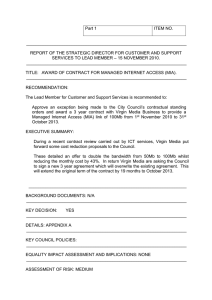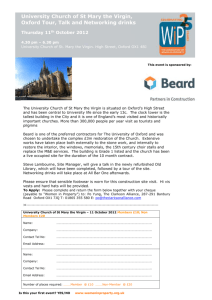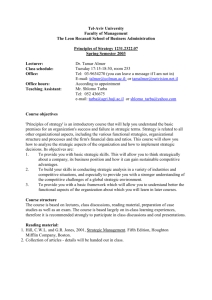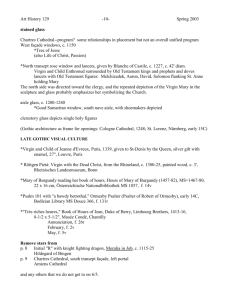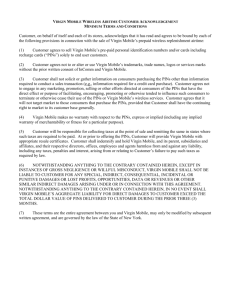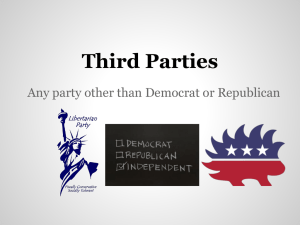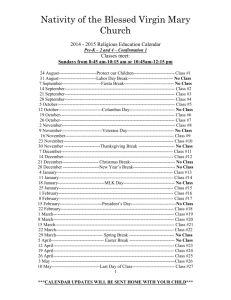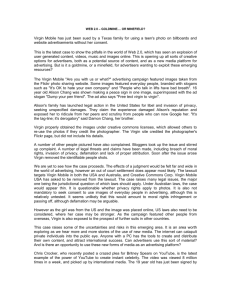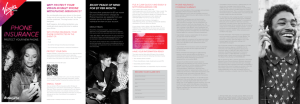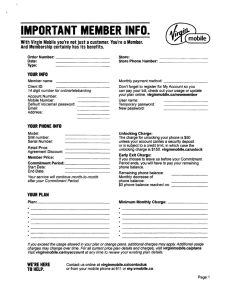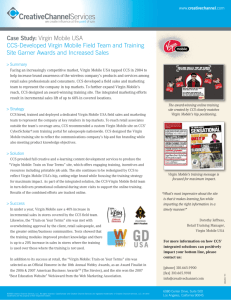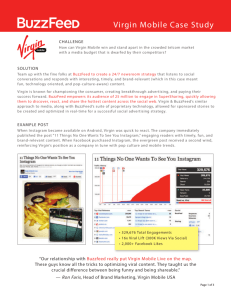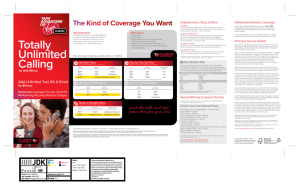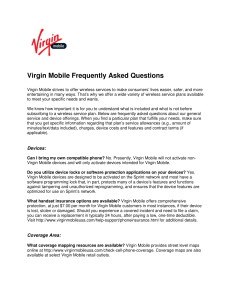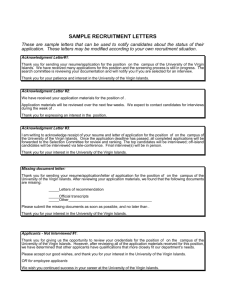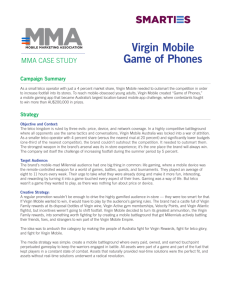Creative Brief Project
advertisement
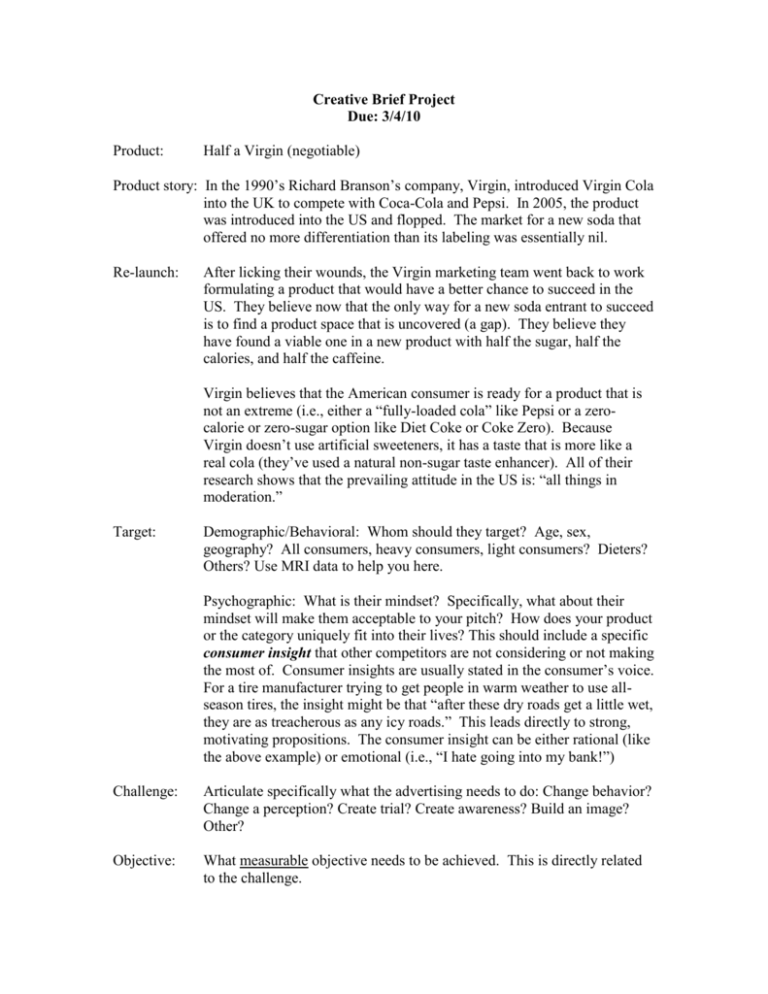
Creative Brief Project Due: 3/4/10 Product: Half a Virgin (negotiable) Product story: In the 1990’s Richard Branson’s company, Virgin, introduced Virgin Cola into the UK to compete with Coca-Cola and Pepsi. In 2005, the product was introduced into the US and flopped. The market for a new soda that offered no more differentiation than its labeling was essentially nil. Re-launch: After licking their wounds, the Virgin marketing team went back to work formulating a product that would have a better chance to succeed in the US. They believe now that the only way for a new soda entrant to succeed is to find a product space that is uncovered (a gap). They believe they have found a viable one in a new product with half the sugar, half the calories, and half the caffeine. Virgin believes that the American consumer is ready for a product that is not an extreme (i.e., either a “fully-loaded cola” like Pepsi or a zerocalorie or zero-sugar option like Diet Coke or Coke Zero). Because Virgin doesn’t use artificial sweeteners, it has a taste that is more like a real cola (they’ve used a natural non-sugar taste enhancer). All of their research shows that the prevailing attitude in the US is: “all things in moderation.” Target: Demographic/Behavioral: Whom should they target? Age, sex, geography? All consumers, heavy consumers, light consumers? Dieters? Others? Use MRI data to help you here. Psychographic: What is their mindset? Specifically, what about their mindset will make them acceptable to your pitch? How does your product or the category uniquely fit into their lives? This should include a specific consumer insight that other competitors are not considering or not making the most of. Consumer insights are usually stated in the consumer’s voice. For a tire manufacturer trying to get people in warm weather to use allseason tires, the insight might be that “after these dry roads get a little wet, they are as treacherous as any icy roads.” This leads directly to strong, motivating propositions. The consumer insight can be either rational (like the above example) or emotional (i.e., “I hate going into my bank!”) Challenge: Articulate specifically what the advertising needs to do: Change behavior? Change a perception? Create trial? Create awareness? Build an image? Other? Objective: What measurable objective needs to be achieved. This is directly related to the challenge. Proposition: What is the advertising going to say to get the consumer to change behavior, or take action, or take notice? This is your point of differentiation Reason to believe: Why should I believe that your product will deliver? Why will your image be appealing to me (and others who see me?) Mandatories: This is where you list the “must haves” (e.g., logo, product shot, or branding line, etc.) Tone of voice: What kind of personality are you trying to convey? Serious? Intelligent? Friendly? Comical? Positioning: This should fall right out of your strategy. Target…Frame of Reference…Point of Difference My Mandatory: On two pages: page one is your brief, page two is your argument (rationale) for why your brief is correct. Grading Rubric: Concise, insightful, and well defended on all points 100% Strong on most major points and well defended in general 90% Strong in general but poorly defended 80% Patchy. Good thinking on some points, weak thinking on others 70% Weak effort all around 60% Not turned in 0%
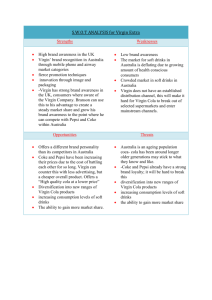
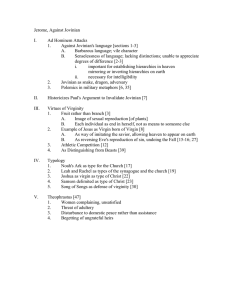
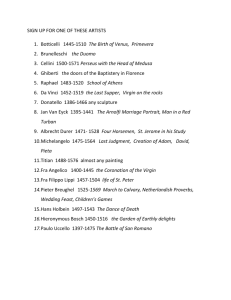
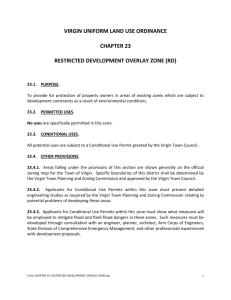
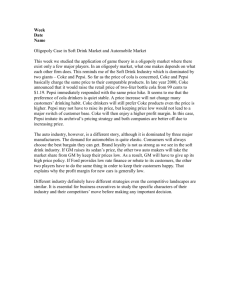
![creative brief[1].doc](http://s3.studylib.net/store/data/008020167_1-bbbb85bf421ecbf5c184ba55e73c6c23-300x300.png)
